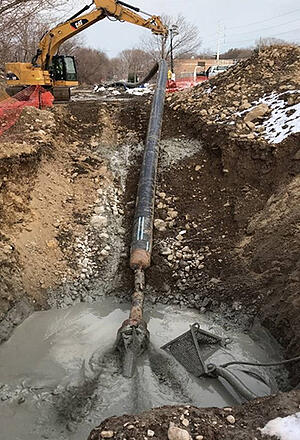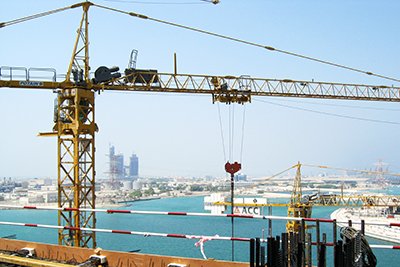What is trenchless technology and how does it improve utility installation?
Utility infrastructure, including electric, gas, and water/wastewater, is critical to sustain and deliver basic human necessities to our communities. Historically, these utilities were primarily built using long-established overhead or conventional open trench installation practices. During the 1960s, expanding urban development increased the demand for utility conveyance under various obstacles such as highways, waterways, railroads, or other man-made or natural features. The utility industry also saw rapid changes in environmental regulations and societal demand that drove the need for quicker and less invasive methods of utility installation. These changing requirements were a catalyst for considering alternative methods from other engineering fields such as vertical drilling for oil and gas, conventional tunneling, and geotechnical engineering. These new methods are collectively known as “trenchless technology.”
Horizontal directional drilling (HDD), a subset of trenchless technologies, uses a drill rig to initiate a pilot borehole along the design alignment and exit at a predetermined location. The pilot borehole is then enlarged to the desired final diameter by an incremental process called reaming. Upon completion of the final borehole ream, the pipe or pipe bundle that conveys the utility is pulled through the borehole and into place. HDD is one of the many trenchless techniques which has gained popularity over the past few decades and has seen major technological advancements that improve installation.
However, because the engineering of a successful HDD project requires a combination of calculations and iterative analyses from a variety of engineering sub-disciplines, and evaluation of feasibility, design, budget, and risk, it requires in-depth experience and a commitment to continuous improvement and thoughtful experimentation.
Key considerations to manage construction costs and risks on your trenchless projects

The unseen nature of subsurface conditions poses a unique set of challenges to underground infrastructure design. Typically, the underlying geology is characterized by performing appropriate subsurface investigations that are dependent on the type of underground infrastructure under consideration.
In addition, trenchless methods are inherently challenging since they are typically considered when there are obstacles that prevent utilizing open trench techniques. These obstacles include previously installed utilities, large water bodies, railroads, highways, difficult terrain, and environmentally sensitive areas, to name a few. You also need to consider regulatory compliance and permitting requirements while adhering to project budgets and timelines.
The complexity, risk, and cost of trenchless projects drives continual innovation as engineers and constructors seek to minimize these factors. As a part of this continuous technical innovation, the trenchless team at Haley & Aldrich explored optimization techniques to streamline the decision-making process during HDD design. And to do so, we looked at ants.
Ants are really good at tunneling
Ants communicate detailed information in very simple ways to help the ant colony “learn” the best pathway to a food source. Swarm Intelligence (SI) was developed in the late 1980s as one of the Artificial Intelligence (AI) disciplines that derived inspiration from studying the collective behavior of insects and animals. Analyzing their behavior provided solutions to problems that many perceived to be challenging for conventional computation techniques. Although no clear solution may be found by analyzing one insect, analysis of a colony of insects (swarm population) has revealed a remarkable collective intelligence.
Ant Colony Optimization (ACO), an algorithm within SI, has been used since the early 1990s to improve the analysis of problems such as optimization of vehicle and internet routing. The point of ACO is to find the optimal path in a seemingly random set of paths between a starting and ending point in a graph. For example, an ant initially searches for food in a seemingly random manner until a food source is found. Upon finding the food source, the ant returns to its colony while secreting a pheromone based on the quality and quantity of food. The ants eventually register the strongest pheromone trail that is indicative of the best quantity and quality of food source which results in the optimal path to the food source.
Using Ant Colony Optimization for horizontal directional drilling

Haley & Aldrich recently collaborated with the Georgia Institute of Technology, specifically Ph.D. student Fernando Patino-Ramirez and his advisor Dr. Chloé Arson, Associate Professor, to explore the use of ACO for HDD drill path optimization. Fernando completed his internship at Haley & Aldrich where he explored ACO applications for our trenchless technology engineering services and studied the multiple variables that can influence a successful HDD design. In the ACO application, multiple iterations considering several variables were run to converge on the optimal drill path, similar to how ants communicate pheromone signals to the whole colony to successfully find food.
The team created a calculation workbook and used data from Haley & Aldrich’s HDD projects to implement ACO and conduct calculation runs. Use of ACO will become one of the many advanced tools that Haley & Aldrich uses for our clients’ benefit to provide more rapid feasibility analysis of HDD drill projects, more rigorous designs, and ultimately lower the cost and risk of HDD projects for electric, gas and water/wastewater transmission projects. We were delighted to have Fernando work with us through his internship and this research, and we expect to continue refinement of this application within our trenchless engineering team.
As a result of that collaboration, Fernando, Chloé, and Haley & Aldrich Senior Geotechnical Engineer Carrie Layhee, co-authored a paper titled “Horizontal directional drilling (HDD) alignment optimization using ant colony optimization.” Fernando worked closely with our trenchless technology engineering team, was mentored by Carrie, and received extensive technical input, support, and collaboration from Haley & Aldrich Senior Trenchless Engineer Abhinav Huli.
While many owners are concerned about the complexities and potentially higher construction costs that can be associated with an HDD project, we believe that true problem solving starts with a thorough understanding and appreciation of the critical driving factors behind our client’s requirements. The innovative research and development described in this paper shows how Haley & Aldrich constantly seeks better solutions for our clients, even if it means studying one of nature’s smallest creatures for a solution.
To learn more about Haley & Aldrich’s trenchless engineering services, contact Carrie or Abhi.
Published: 6/18/2020
- Energy
- Oil and gas transmission
- Electric transmission and distribution
- Trenchless technology
- Geotechnical engineering
Authors

Senior Client Account Manager, Geotechnical Engineer

Senior Technical Specialist




